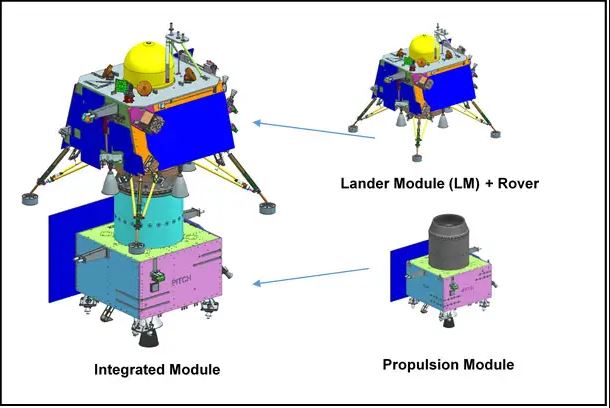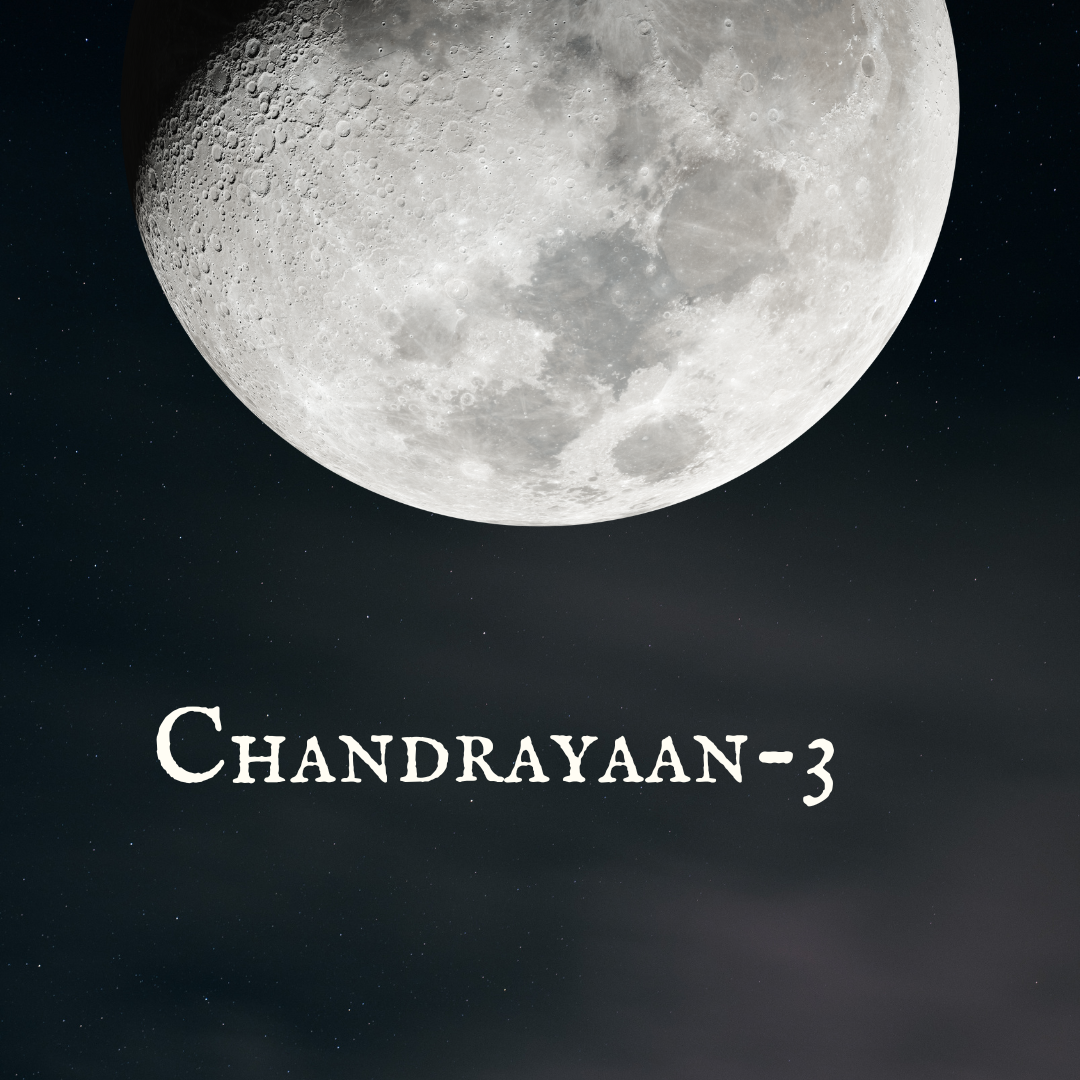What is Chandrayaan-3?
Chandrayaan-3 is the third Indian lunar exploration mission in the Chandrayaan program of the Indian Space Research Organization (ISRO). It has a lander named Vikram and a rover named Pragyan, both of which have characteristics similar of those from the Chandrayaan-2 project.
On July 14, 2023, Chandrayaan-3 was launched from Satish Dhawan Space Centre (SDSC) SHAR at Sriharikota, it will be launched using Launch Vehicle Mark-3(LVM3).
India became the fourth nation to safely land on the Moon and the first to do so close to the lunar South Pole on August 23, 2023 after the spacecraft entered lunar orbit on August 5 and the lander touched down in the area around the lunar South Pole.
With the aim of researching and showcasing new technology necessary for interplanetary missions, Chandrayaan-3 is made up of an indigenous Lander module (LM), Propulsion module (PM), and Rover. The Lander will be able to soft land at a chosen location on the moon and release the Rover, which will conduct in-situ chemical analysis of the lunar surface while it is moving. There are scientific payloads on the Lander and the Rover that will conduct lunar surface tests.
Mission objectives for the Chandrayaan-3 or the purpose of Chandrayaan-3
- Having a lander land on the Moon’s surface softly and safely.
- Investigating and showing off the rover’s driving abilities on the Moon.
- Using materials found on the lunar surface to conduct and monitor experiments to learn more about the Moon’s makeup.
Spacecraft Design

Chandrayaan-3 comprises three main components:
Propulsion module
A 100 km lunar orbit is reached by the lander and rover combination thanks to the propulsion module. It resembles a box with a sizable solar panel installed on one side and the Intermodular Adapter Cone, a cylindrical mounting device for the lander, situated on top.

Vikram lander
The gentle Moon landing was made possible by the Vikram lander. Additionally, it has a box-like design, four landing legs, and four landing thrusters that can each generate 800 newtons of thrust. It is equipped with the rover and several scientific tools for on-site analysis. Working of Vikram lander is five payloads are included in the lander module for different duties on the Moon.

Lander has a number of cutting-edge technology that will help it accomplish the mission’s goals, including
Altimeters: Altimeters based on RF and laser
Velocimeters: Lander Horizontal Velocity & Laser Doppler Velocimeter Camera
Inertial Measurement: Inertial referencing and Accelerometer package based on a laser gyro.
Propulsion Mechanism: Throttleable Engine Control Electronics, 800N Throttleable Liquid Engines, and 58N Attitude Thrusters
NGC: Navigation, Guidance, and Control Design for Powered Descent Trajectory and related software components
Identifying and Avoiding hazards: Hazard Avoidance & Detection for Landers Landing Leg Mechanism for the Camera and Processing Algorithm.
Pragyan rover

A six-wheeled vehicle with a mass of 26 kilograms, the Pragyan rover. The rover is anticipated to collect a variety of data to aid in the study of the lunar surface’s makeup, the presence of water ice in the soil, the timing of lunar impacts, and the development of the Moon’s atmosphere. Working of Pragyan rover is Lunar surface exploration, including traversing the craters and rocks there.
FAQs
What was the purpose of Chandrayaan-3?
The goal of accomplishing a soft landing, investigating the lunar surface, and gathering priceless scientific data.
What did Chandrayaan-3 find on moon?
Chandrayaan-3 discovered a 2.4 km wide by 4.8 km long area with 150 m spacing that would be suitable for a safe fall.
Which fuel used in Chandrayaan-3?
Cryogenic fuel lines were employed in the Chandrayaan-3 launch and subsequent missions.
Why is sending Chandrayaan-3?
The three goals of the mission, according to ISRO, were to show a soft and safe lunar surface landing, lunar rover wandering, and to carry out in-situ scientific investigations.
What will happen if Chandrayaan-3 is successful?
India’s reputation will be enhanced by a successful landing on the south pole of the moon on August 23, and the country’s budding space industry is anticipated to soar to new heights as a result.
What is special about Chandrayaan-3?
Chandrayaan-3 has touched down in the southern polar region of the moon, more especially in an area close to the lunar South Pole. The distinctive features of this area make it of tremendous scientific significance. The existence of craters that are always in shadow is one notable feature of the Moon’s south polar area.
You want to read more articles Chandrayaan-1

I have completed both a Diploma (College: N G P Patna-13) and a Bachelor of Technology (University: IPU Delhi) in CSE. I qualified for the Railway JE Exam and joined in 2017. Presently, I am a software engineer. I have been working in the engineering field for 7 years. Along with my job, I am also an educator, content writer, current affairs expert, and blogger. I have been working in these fields for 3 years. I dedicated myself to making learning simple and enjoyable. As a writer, I have spent 3 years crafting insightful content. With 3 years of expertise in current affairs, I provide up-to-date knowledge as well as analysis of current events from exam points of view. Additionally, I am offering personalized educational support and guidance.

